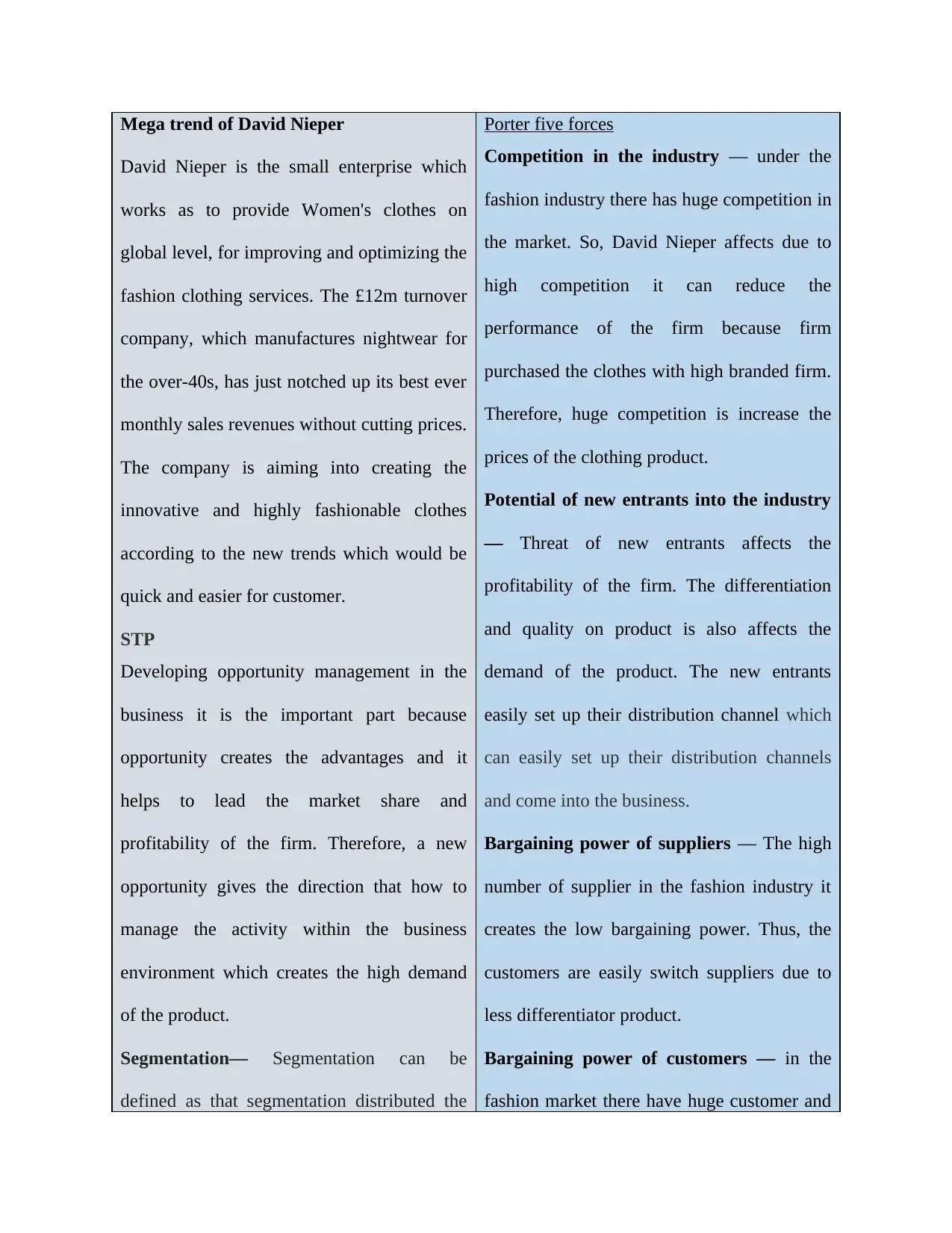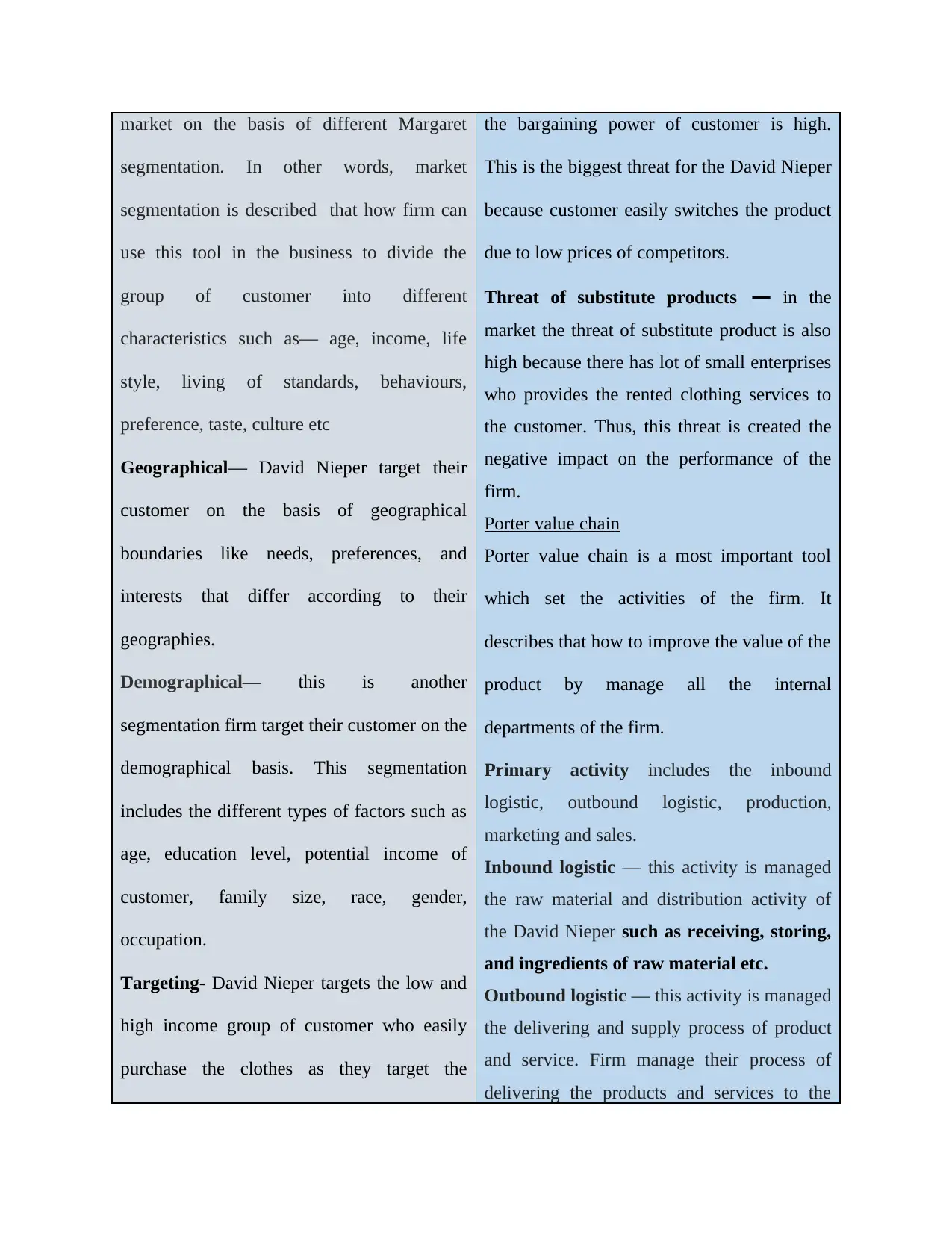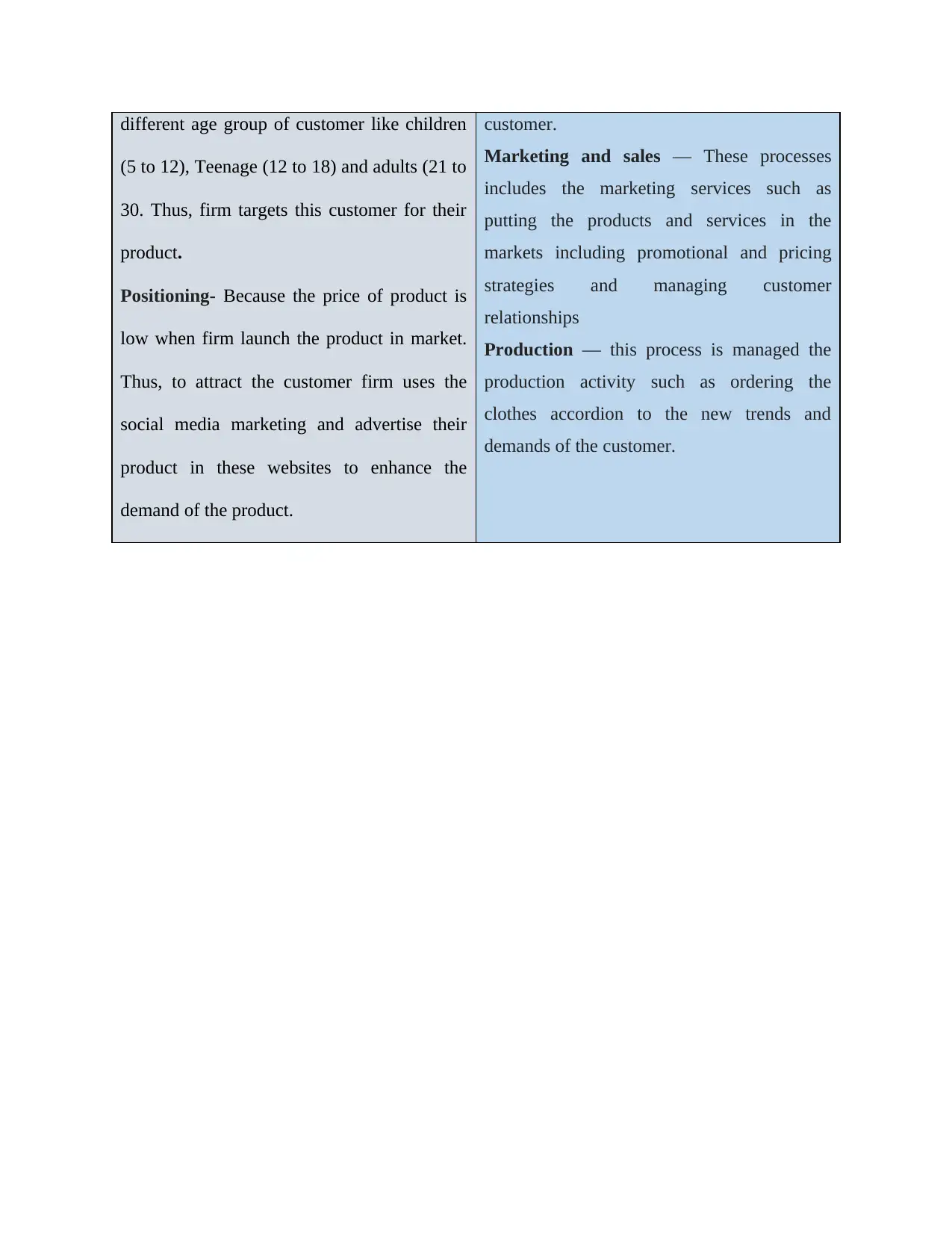David Nieper: Mega Trends, Porter's Analysis, and Value Chain Review
VerifiedAdded on 2021/02/20
|3
|855
|39
Report
AI Summary
This report provides a comprehensive analysis of David Nieper, a women's clothing company, focusing on its strategic positioning, competitive environment, and operational efficiency. The analysis begins with an overview of the company, highlighting its £12 million turnover and its focus on innovative and fashionable clothing. The report then applies Porter's Five Forces framework to assess the competitive intensity within the fashion industry, examining factors such as competition, the threat of new entrants, supplier power, customer bargaining power, and the threat of substitute products. Furthermore, the report explores David Nieper's Segmentation, Targeting, and Positioning (STP) strategies, considering geographical and demographic segmentation. Finally, the report utilizes Porter's Value Chain to analyze the company's primary activities, including inbound logistics, outbound logistics, marketing and sales, and production, to understand how value is created and delivered to customers. The report aims to provide a detailed understanding of David Nieper's business model and its strategic challenges and opportunities within the fashion industry.
1 out of 3










![[object Object]](/_next/static/media/star-bottom.7253800d.svg)